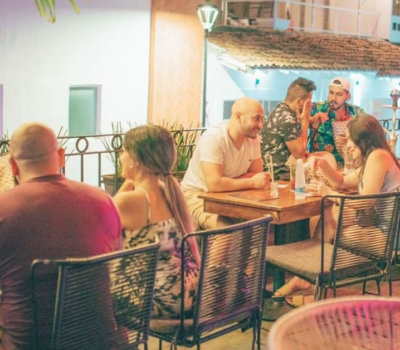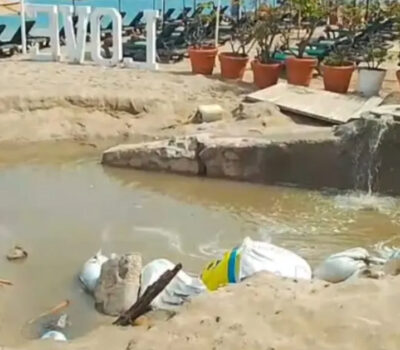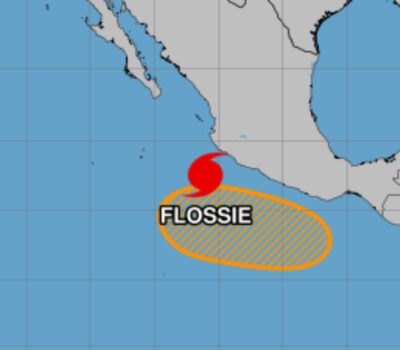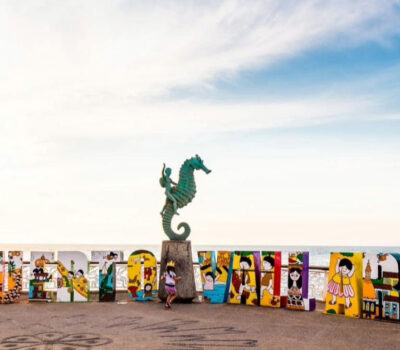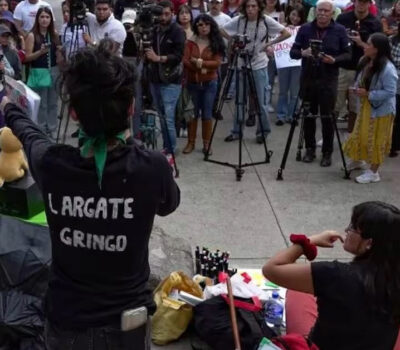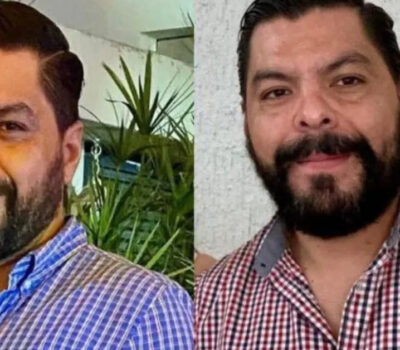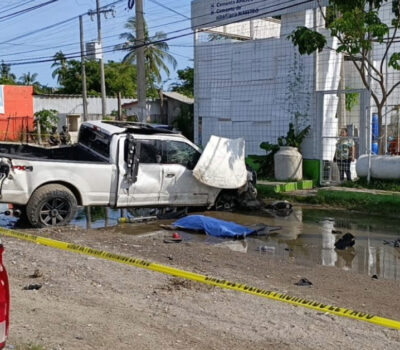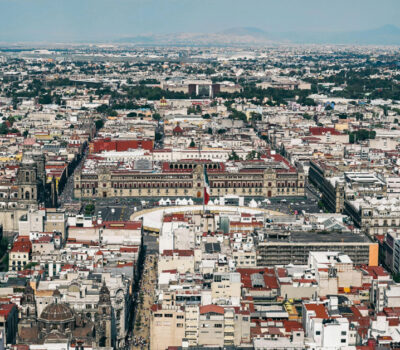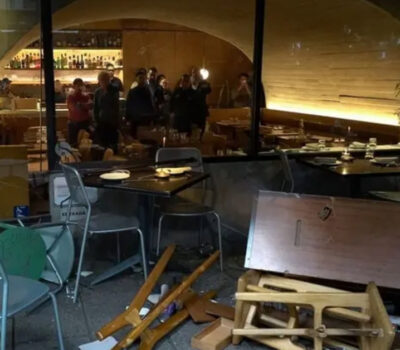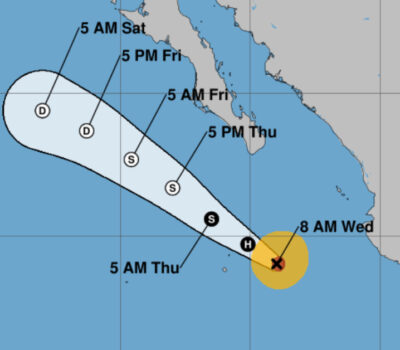Puerto Vallarta (PVDN) – The cost of living in Mexico has been a popular topic of discussion with numerous blogs dedicated to it. Many people are curious about how much others spend to live in a foreign country, especially those considering retiring in Mexico. As someone who has been asked about my cost of living in Mexico countless times, I understand its significance as a determining factor.
People from diverse backgrounds and financial situations decide to move to Mexico for various reasons. Some are attracted to the slower-paced lifestyle, regardless of their financial situation, while others choose Mexico to make their fixed income stretch further. The motivations behind moving to Mexico vary greatly.
Personally, I was a middle-class American in my 30s who grew tired of working long hours without any savings. I made the decision to move to Mexico in search of a simpler life, free from the pressure of “Keeping up with the Joneses.” Over the past two decades, I’ve observed a growing number of younger Americans questioning the “American Dream” and the high financial and mental costs associated with it.
Is the grass truly greener on the other side? For most people, the answer is “yes,” but it depends on your commitment to embracing a simpler lifestyle. It’s easy to increase your cost of living in Mexico to a point where you’re no better off than before if finances are a motivation for moving.
Having lived in various locations in Mexico over the past 12 years, including one of the poorest states and the most expensive city, I have gained a clear understanding of the true cost of living in Mexico.
Cost of housing in Mexico
When I initially moved to Puerto Vallarta, I rented a one-bedroom apartment with ocean views near Molino de Agua, close to the Malecon. Back then, the rent for that apartment was $5,000 pesos, which was equivalent to $385 USD at the time. This price only covered water, and I had to pay for other utilities separately. Nevertheless, it was an amazing deal to have ocean views and be just a few steps away from the Malecon. It was truly delightful and small.
I also resided in Oaxaca, where I paid $3,500 pesos for a spacious two-bedroom apartment, with all utilities included. Converted to USD, I was paying $220 monthly for a large two-bedroom apartment. It was the most spacious and affordable place I have lived in Mexico. It’s also important to remember that Oaxaca is one of the poorest states in Mexico, so the dollar stretched much further.
Currently, I reside in Mexico City, known for being the most expensive place to live in Mexico. Actually, based on the average cost per sqr meter, Puerto Vallarta is the most expensive place in Mexico, but I am sure all the luxury beachfront homes push up the average cost. I digress.
Now, I live in Condesa and pay $9,800 pesos per month for a two-bedroom apartment, including all utilities. With the current currency rates, this amounts to $550 USD per month. For those familiar with Mexico City, this is a reasonably priced accommodation option in Condesa. It’s a modest apartment located by the park with a balcony and the neighborhood is the most popular in the city.
I also maintain a small one-bedroom apartment outside of the tourist zone of Puerto Vallarta, which costs me $3,000 pesos a month, or $150 USD, including all utilities. I usually spend several months there during the Winter/Spring and one week a month during the Summer-Fall. It’s not for everyone, but I love it. There are no foreigners around and I don’t hear anyone speaking English. I certainly live in the Mexico part of Puerto Vallarta. I love it much more than living in the Romantic Zone. Just my personal preference. Rents double if your neighbor has white skin and speaks English, that’s just a fact.
All the places I have lived in Mexico were located in safe areas, and the apartments/houses were clean and well-constructed. I wouldn’t consider any of them to be low-income housing; they were all middle-class dwellings in good and safe neighborhoods.
Based on my experience, you can easily end up paying US rent prices while living in Mexico if you’re not willing to simplify your life and get inside the Mexican culture. If you’re not open to making adjustments, you can find a small one-bedroom apartment for $2,000 USD. I know that’s a dream for some American cities, but not in my life.
Cost of utilities in Mexico
Utilities in Mexico have significantly lower costs compared to the USA. Even 20 years ago, it was nearly impossible to have an electric bill under $100 a month in the USA, but in Mexico, you can expect to spend around $20-$30 USD every two months. However, it’s important to note that if you use air conditioning, your utilities can reach the same level as in the USA or even higher.
When I arrived in Mexico during the early spring, I rented an apartment in Puerto Vallarta without air conditioning. It was uncomfortable for me to sleep at night without AC since I had been accustomed to it my entire life. When summer arrived, I decided to purchase an AC unit for my bedroom, and I enjoyed two months of comfortable sleep. However, I received an electric bill of $5,000 pesos, equivalent to $380 USD at the time. That bill covered only using the AC in the bedroom for 6 hours per night. Before AC, the bill was around $400 pesos every two months.
The pricing structure for electricity in Mexico differs greatly from what I was used to in the USA. In Mexico, you are assigned a certain block of electricity usage at an extremely cheap rate based on the previous year’s usage at your address, even if you weren’t living there. If you exceed your average usage, you pay a much higher rate per kilowatt-hour. I wasn’t aware of this and the people who lived in my apartment before me used significantly less electricity, so when I turned on the AC, I consumed a normal month’s worth of electricity for that apartment in just a few days. Therefore I was hit with a huge cost per Kwh.
If you are careful and can adjust to living without AC, you can keep your electricity costs to as low as $15 USD per month. Obviously, if you spend a lot of time at home running computers and sitting and watching large-screen TVs all day, it will be more. If AC is essential to you, you should budget around $200 USD per month. I’m happy to report that I haven’t used AC in 15 years, and I sleep just fine. Even as someone who used to complain about the heat at 75°F (23°C), I have adjusted to the climate.
Regarding internet services, they have improved significantly since I arrived in Mexico. Initially, I experienced frequent outages and slow speeds, reminiscent of AOL dial-up in the good old days. However, in recent years, I haven’t had any issues, and I currently have a 150 Mbps connection. I use Telmex because I believe they offer the best service. My internet costs $500 pesos or $25 USD per month for 150 Mbps, which I consider quite affordable. In Mexico City, I have 500 Mbps and pay all my streaming TV channels through Telmex (HBO, Netflix, Stars, Apple) and I pay $1200 pesos ($65 USD).
In terms of water and gas, I have only paid for gas when I lived in Oaxaca. I had to buy a gas canister approximately every 8 weeks for $500 pesos, totaling $25 USD every two months. In all the other places I’ve lived, gas was included in the cost of my rent. Similarly, I have never had to pay for water in any of the places I resided, so the cost of water must be minimal. If you are expected to pay for gas and water, it would be wise to budget around $50 a month for both, just to be on the safe side. Obviously, if you are planning to own a home, you would pay for these, unless you own a condo and it’s included in the maintenance fees.
Disclaimer about housing and utility costs: The bigger the house, the more the rent (or mortgage), and utilities will cost. Stating the obvious. I know someone is going to email me about how there is no way they could live in their 10,000 sqr ft Oceanfront Villa at the costs I am quoting. This article isn’t for people who don’t need to think about their budget. I am demonstrating how you could live a better life in Mexico on a fixed income. If you aren’t on a fixed income, all of this information will seem foreign to you ;)
Food Cost in Mexico
Now, let’s talk about the cost of food in Mexico. When it comes to shopping for groceries, I prefer to visit the Mercado (indoor farmers market) and Tianguis (open-air street market). I rarely shop at supermarkets, although they are available if that’s your preference.
Every Tuesday, a tianguis sets up on the street in front of my house in Mexico City. It spans four blocks and operates from 8 AM to 6 PM. This is where I do the majority of my shopping. I take $1,000 pesos ($55 USD) each week and buy all the items I need for the week. I spend around $250 a month on essential food items such as vegetables, fruits, meats, chicken, and cheeses from the tianguis. Sometimes it can be around $350 USD a month.
There is also a Mercado just three blocks away from my house, in case I need to pick up some items during the week, although it’s a rare occurrence. Usually, my Tuesday tianguis shopping covers all my needs for the week. I do prepare a lot of food and freeze things, so I do have some planning involved to keep my costs down.
One tip I’d like to share is that healthy foods are generally cheaper than fast food and junk foods in Mexico. It’s the opposite of the food cost reality in the USA, where junk food tends to be inexpensive, and fresh fruits and vegetables can be costly.
In terms of grocery store shopping, I personally don’t frequent local grocery stores as I tend to consume locally sourced products from vendors at the tianguis and mercado. However, I do rely on the largest retailer, Amazon Mexico, for essentials like toiletries and dry goods, which they conveniently deliver. I avoid grocery stores because I often end up buying unnecessary items and indulging in impulse purchases. Those temptations are not as prevalent at the tianguis, so I can better control my spending. Plus, I simply dislike grocery shopping.
In total, I allocate $500 USD per month for groceries, toiletries, and dry goods. This is only half of what I used to spend on groceries every month in the USA 18 years ago. I imagine the cost has increased even further today. And although I do budget $500 USD a month for grocery and toiletries, many months I don’t meet that maximum budget.
Cost of transportation in Mexico
Now let’s discuss transportation. Personally, I do not own a car. I primarily rely on Uber, public transportation, and my own two feet to get around. I strategically chose a living location where I can walk to places I frequently visit, such as the mercado, a mall, numerous restaurants, and cafes. I could easily live without ever getting into another car, bus, or metro. I can access everything I need by walking. In a month, I estimate I spend about $15 on transportation, mostly on Uber rides.
If you do have a car (although I recommend not having one in Mexico), you will need to budget for gas, insurance, and maintenance costs. Since I have never had a car in Mexico, I am unsure about the specific expenses you would need to consider. I can just tell you that the roads are horrible, most drivers are horrible, and hardly anyone carries insurance, so if you have an accident that isn’t your fault, you will still be paying out of pocket. To me, it’s not worth the hassle. No keeping up with the Joneses. Remember, that was my goal.
Entertainment costs in Mexico
Moving on to entertainment and extras, dining out is one of my biggest expenses, although I consider it a luxury rather than a living expense. My budget for dining out is approximately $2,000 pesos ($100-$125 USD) per week. This covers my meals at restaurants or ordering in, as well as treating my friends on a couple of occasions each week.
Let me introduce you to a pro tip: I love eating at cocinas económicas. These are small restaurants, often run by older women, that offer a simple menu of the day at a fixed price. They typically offer two or three options for the day, including a soup, a main course (such as chicken or beef with rice and salad), a dessert, and a flavored water drink. The typical price ranges from $50 to $65 pesos ($3 to $4 dollars). I frequently dine at these places, especially when I’m traveling. It’s like enjoying a home-cooked meal prepared by a Mexican grandmother—what more could you ask for?
Since the pandemic, my approach to entertainment has changed for the better. Now, most of my entertainment revolves around having friends come to my house for game nights and movie nights. We gather, grab some beers, enjoy tacos, and truly cherish each other’s company. The cost is minimal, and the experiences are more meaningful. For each game or movie night, I may spend around $20 USD on beers. Fortunately, there are street vendors selling delicious tacos, hamburgers, and hot dogs just outside my house, so dinner is easily taken care of.
I also take advantage of the free entertainment options available in both Mexico City and Puerto Vallarta. In Puerto Vallarta, my top choice is spending time at the beach. I adore the water, the soothing sounds of the ocean, and the gentle breeze. For me, it’s even better than meditation. I prefer less crowded beaches, as I appreciate the tranquility. In the evenings, there are often free music or theatre shows happening at the Arcos on the Malecon.
In Mexico City, I’m fortunate to have Chapultepec, a large park and forest, located close to my house. It’s even larger than New York’s Central Park. The park entrance is free, and the zoo within the park is also free to enter. There are so many things to do in the park that you can’t get bored (actually it’s a forest).
Traveling is also a large part of my entertainment. I have visited every state of Mexico! I take at least two trips per month within Mexico, with an average duration of three nights per trip. I allocate a total of $300 for both trips, which comes to $150 per trip. This budget includes transportation costs via first-class buses, hotel accommodations, food expenses, and museum entry fees. Traveling is an integral part of my life, and while I do it on a budget, I refuse to give it up. But I have learned to do it on the super cheap.
Healthcare costs in Mexico
Knock on wood! I have been in Mexico for nearly two decades and have never needed medical care. I have been to a doctor two or three times for colds, once for an eye infection. So in the last 20 years, I have dedicated maybe $1,000 dollars to medical and dental, which I pay out of pocket.
What I do know is that healthcare in Mexico is certainly cheaper than the USA. Most Mexicans have insurance through their work (IMSS, the government health system), yet most choose to pay out of pocket to private doctors. Foreigners can sign up for IMSS and pay a small yearly cost for insurance at the public hospitals. If you are on a fixed income and can pass the pre-existing condition hurdles and physical, I recommend buying into public healthcare just in case there is a costly emergency. But plan on your normal checkups and minor sniffles out of pocket. Private health insurance is available, but it’s costly, and more so if you are moving to Mexico as retirement. We all know, the older you are, the more expensive your health insurance and care will be.
In Mexico, they do turn patients away at the hospital if they don’t have money or insurance to cover the costs. You certainly need to have a few thousand dollars to pay at the hospital door in major medical emergencies. Otherwise, you will die in the parking lot. There is no law that hospitals must care for everyone who enters the emergency room.
I am not going to include healthcare in my overall cost of living because I don’t have that much experience with the healthcare system here. But healthcare and costs are something you should consider, and speak to a professional about if you are planning to retire in Mexico.
So how much does it cost to live in Mexico?
To summarize the cost of living in Mexico, let’s focus on the essentials: housing (middle-class living), utilities, and food necessities. As a single person living alone, my monthly costs for these essentials are as follows:
- Rent: $550 USD (Two-bedroom apartment in one of Mexico City’s most expensive neighborhoods)
- Utilities: $25 USD (Only internet; other utilities included in rent)
- Food (basic grocery needs): $500 USD (Includes all food, dry goods, and toiletries for a month)
Therefore, my total cost of living in Mexico for the essentials amounts to $1075 USD per month.
When it comes to non-essential expenses, such as entertainment and my second apartment in Puerto Vallarta, I easily spend a total of $1,500 USD per month. This is more than my basic living costs.
To provide some perspective, before I moved to Mexico, I was spending $1,000 USD per month on rent alone for a two-bedroom home in the USA, which was almost two decades ago. I am sure it would be more today.
Beware of Currency Exchange Fluctuation
When I first moved to Mexico, the exchange was $11 pesos to the dollar. In 2022, the exchange rate was $20 pesos to the dollar. This means that my wealth nearly doubled because I work in dollars and the dollar was strong against the peso. Just the first quarter of 2023 the dollar weakened to $17 pesos to the dollar. It doesn’t sound like a lot, but it adds up on big-ticket items, like housing. From January 1, 2023 until May 1, 2023, my rent has stayed the same in pesos, but in dollars, my rent was $490 USD per month in January. In May, my rent is $575. But if I was paying the same rent 20 years ago when I first arrived in Mexico, it would have been $890 USD. So, exchange rates can keep you on your feet when it comes to those of us who live on a budget.
Disclaimer
First, I save 20% of my monthly income for retirement. If you are still in the workforce, perhaps saving every month needs to be included in your budget. Also, not everyone can live on a budget as low as mine. Some people just aren’t willing to make that commitment to decluttering and simplifying, they need their stuff! No judgment! If you have a secure financial profile, you can live a lot larger in Mexico. The information here is more useful to those on a budget and fixed income looking to know if they can stretch their dollars more in Mexico. Yes, if you are willing to put in the effort, you can live in Mexico on less than $1,000 a month and still live well. Just as a reference point, most Mexicans make less than $1,000 a month in salary, and that’s a good-paying job. The workforce probably makes closer to $700 USD per month.
Ian Hayden Parker is the founder of PVDN and has been living as an expat in Mexico for almost two decades.
Puerto Vallarta (PVDN) - The cost of living in Mexico has been a popular topic of discussion with numerous blogs dedicated to it. Many people . . .


